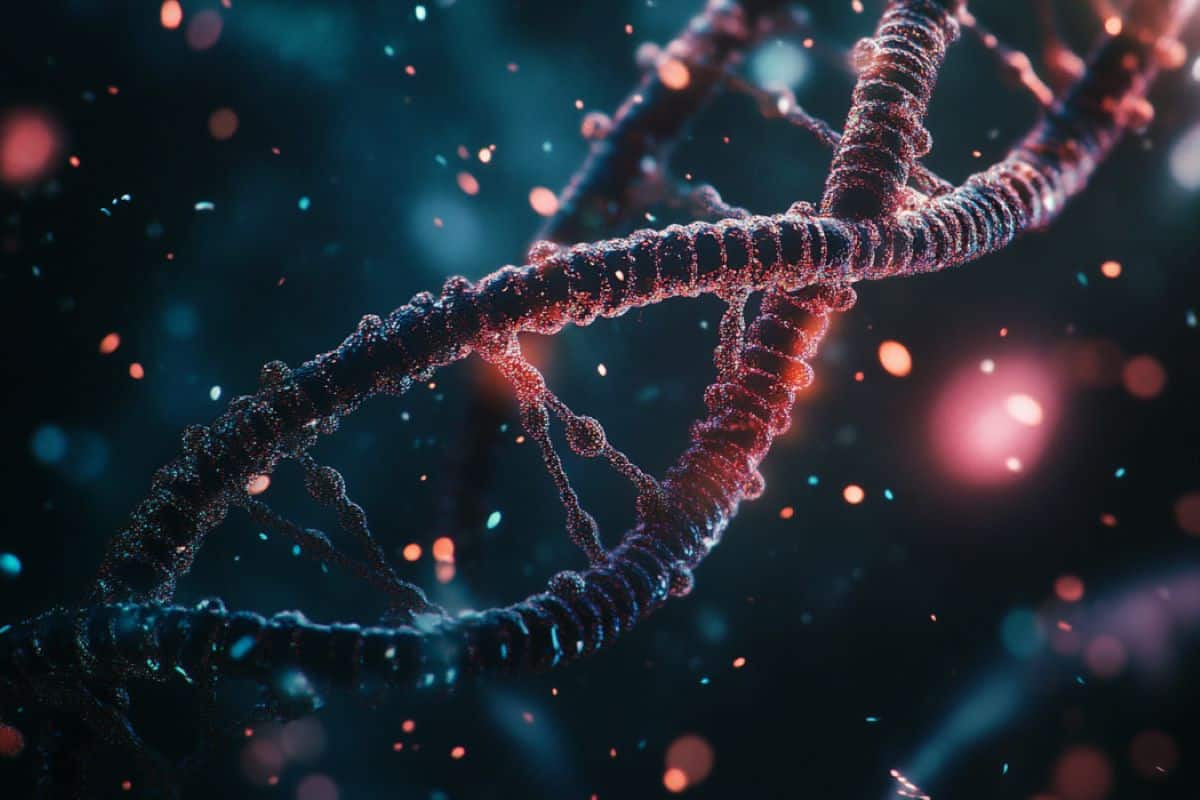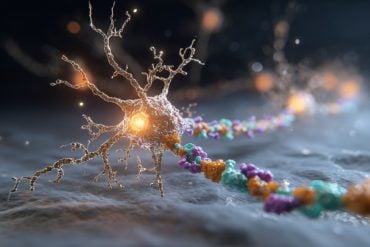Summary: Researchers have discovered that the protein USP50 regulates DNA replication by managing which enzymes—nucleases or helicases—cleave or unwind DNA strands during replication. This control is crucial for stable replication, especially when the process encounters issues that need restarting. When USP50 is absent, cells struggle to coordinate enzyme use, leading to replication errors and potential genetic instability.
The findings provide new insights into genome maintenance and may help explain some hereditary conditions, such as early-onset aging and certain cancers. Understanding USP50’s role opens doors to potential therapeutic strategies aimed at protecting DNA integrity.
Key Facts
- USP50 regulates enzyme selection during DNA replication, promoting stability.
- Without USP50, cells improperly deploy enzymes, leading to DNA replication defects.
- USP50’s role is linked to understanding hereditary conditions and potential therapies.
Source: University of Birmingham
A protein that is involved in determining which enzymes cut or unwind DNA during the replication process has been identified in a new study.
In a new paper published in Nature Communications, an international team of researchers have found that the protein USP50 supports the DNA replication process by helping to decide the proper use of nucleases or helicases.

These enzymes are implemented during the DNA replication process to promote ongoing replication and where the copying machinery runs into problems and needs to restart.
The team led by Professor Jo Morris from the University of Birmingham’s Department of Cancer and Genomic Sciences have identified that USP50 determines which or the many helicases and nucleases are used during ongoing replication, fork restart, and the maintenance of telemores, the DNA-rich protein structures on the ends of chromosomes.
The identification of USP50’s role provides a new insight into the DNA replication process and could lead to a greater understanding of how some hereditary conditions develop.
Jo Morris, Professor of Molecular Genetics in the Department of Cancer and Genomic Sciences at the University of Birmingham and corresponding author of the study said:
“Our study concerns how our cells use specific enzymes to support the typical regulation of DNA replication.
“We found that because there are several different enzymes involved in cleaving and unwinding, cells must regulate which ones they use so that replication can happen properly. We identified that protein USP50 is involved in this regulation.
“This discovery may be an important step to understanding how some hereditary gene changes lead to early onset ageing and cancer.”
Attempted workaround
The study also found that when USP50 is absent during replication activity, cells attempted to use various nucleases and helicases in a less coordinated fashion leading to replication defects in cells.
Professor Morris added: “The finding that cellular nucleases and helicases can stop replication of certain sections of DNA was a surprise – it shows that cells closely co-ordinate their toolkit of DNA-processing enzymes to get DNA replication properly done.”
Professor Simon Reed, Co-Director of the Division of Cancer and Genetics at Cardiff University and a co-founder of Broken String Biosciences, and co-author of the paper said:
“I am truly honoured to have co-authored this paper published in Nature Communications, exploring the critical role of USP50 in safeguarding genome stability. This research sheds light on the complex mechanisms that protect our cells from DNA damage and highlights how these discoveries could shape future therapies.
“Thank you to my collaborators—together, we’ve taken another step forward in understanding how our cells function and how we can apply this knowledge to advance medical science.”
About this genetics research news
Author: Tim Mayo
Source: University of Birmingham
Contact: Tim Mayo – University of Birmingham
Image: The image is credited to Neuroscience News
Original Research: Open access.
“USP50 suppresses alternative RecQ helicase use and deleterious DNA2 activity during replication” by Simon Reed et al. Nature Communications
Abstract
USP50 suppresses alternative RecQ helicase use and deleterious DNA2 activity during replication
Mammalian DNA replication relies on various DNA helicase and nuclease activities to ensure accurate genetic duplication, but how different helicase and nuclease activities are properly directed remains unclear.
Here, we identify the ubiquitin-specific protease, USP50, as a chromatin-associated protein required to promote ongoing replication, fork restart, telomere maintenance, cellular survival following hydroxyurea or pyridostatin treatment, and suppression of DNA breaks near GC-rich sequences.
We find that USP50 supports proper WRN-FEN1 localisation at or near stalled replication forks.
Nascent DNA in cells lacking USP50 shows increased association of the DNA2 nuclease and RECQL4 and RECQL5 helicases and replication defects in cells lacking USP50, or FEN1 are driven by these proteins.
Consequently, suppression of DNA2 or RECQL4/5 improves USP50-depleted cell resistance to agents inducing replicative stress and restores telomere stability.
These data define an unexpected regulatory protein that promotes the balance of helicase and nuclease use at ongoing and stalled replication forks.






